What Happens When You Drop Your Phone: Damage Explained
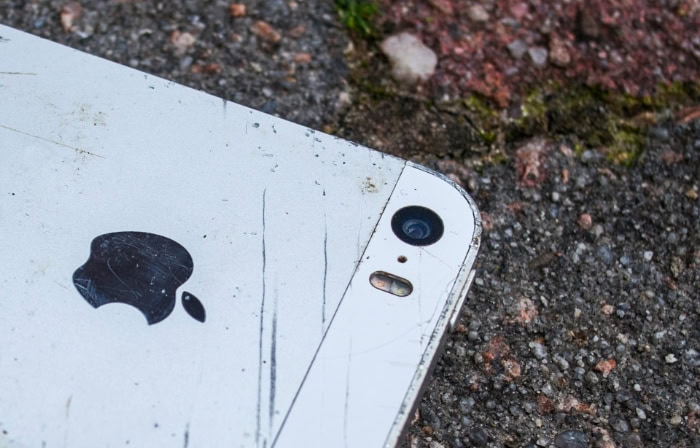
Oops! It happened again. That heart-stopping moment when your phone slips from your grasp, tumbling towards the ground in what feels like slow motion. As the device hits the floor with a sickening thud, a wave of panic washes over you.
Will the screen be shattered? Is the phone still functional? Dropping your phone is an all-too-common occurrence in a world where smartphones are essential companions.
From minor scuffs to major malfunctions, the consequences of a dropped phone can range from inconvenient to downright disastrous.
Types of Damage
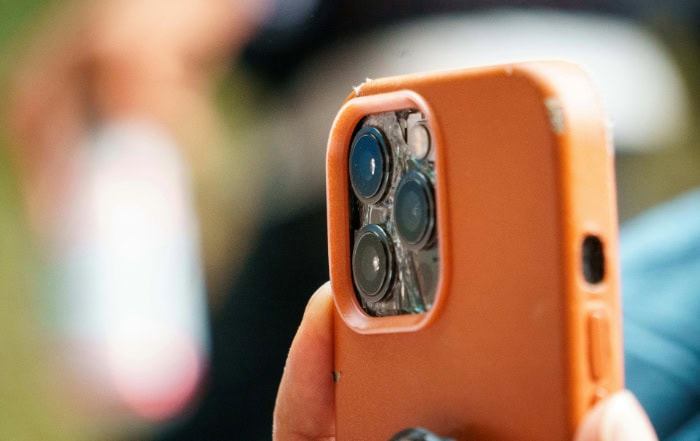
When you drop your phone, various types of damage can occur, ranging from cosmetic issues to severe malfunctions that render the device unusable. The extent of the damage depends on factors such as the height of the drop, the surface it lands on, and the phone's design.
Let's take a closer look at the common types of damage that can result from a dropped phone.
Screen Damage
The most visible and prevalent type of damage from dropping a phone is screen damage. The screen is one of the most vulnerable components, as it is made of glass and can easily crack, shatter, or develop internal display issues upon impact.
Cracks can range from small, barely noticeable lines to extensive spider web-like patterns that obscure the display. In severe cases, the screen may shatter completely, leaving the phone unusable until repaired or replaced.
Internal display issues, such as dead pixels or discoloration, can also occur due to the impact, even if the external glass remains intact.
Internal Component Damage
While screen damage is the most apparent consequence of dropping a phone, internal component damage can be equally concerning. The impact can cause loose connections, dislodged components, or even damage to the circuit board.
Loose connections can result in intermittent functionality issues, such as the phone randomly shutting off or certain features not working properly. In more severe cases, the circuit board may suffer physical damage, leading to complete device failure.
Identifying internal component damage can be challenging, as it may not be immediately visible and can manifest as various performance issues over time.
Battery Damage
The battery is another critical component that can be affected by a phone drop. If the impact is severe enough, it can cause battery punctures or dislodgement, leading to swelling or leakage.
A punctured or swollen battery poses a significant safety risk, as it can overheat, catch fire, or even explode. Additionally, battery damage can result in reduced performance, shorter battery life, or complete failure to hold a charge.
If you suspect battery damage after dropping your phone, it is crucial to address the issue promptly and seek professional assistance to avoid potential hazards.
External Damage
Apart from the internal components, dropping your phone can also cause external damage to the device's body. Dents, scratches, and scuffs are common, particularly on the edges and corners of the phone.
While these cosmetic issues may not directly impact the phone's functionality, they can detract from its overall appearance and potentially reduce its resale value. Moreover, external damage can compromise the phone's structural integrity, making it more susceptible to further damage in the future.
Cracks or gaps in the phone's body can also increase the risk of water exposure, leading to additional complications if the device is not water-resistant.
Factors Influencing Damage Severity
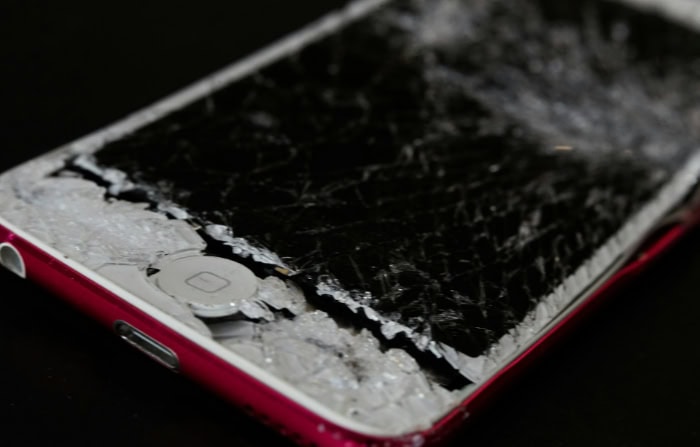
When a phone is dropped, several factors come into play that determine the severity of the damage it sustains. Understanding these factors can help you assess the potential risks and take appropriate measures to protect your device.
Height of the Drop
The height from which a phone is dropped is one of the most significant factors in determining the severity of the damage. The greater the height, the more force the phone will experience upon impact, increasing the likelihood of serious damage.
Drops from a short height, such as from your pocket or a low table, are less likely to cause significant harm compared to drops from a higher elevation, like a balcony or a multi-story building. However, even a short drop can be destructive if the phone lands on an unforgiving surface or at an unfortunate angle.
Surface Type: Hard vs. Soft Surfaces
The type of surface your phone lands on plays a crucial role in the extent of the damage it sustains. Hard surfaces, such as concrete, tile, or hardwood floors, offer little to no cushioning and can cause severe damage to your phone.
The impact can be particularly devastating if the phone lands on a corner or edge, as the force is concentrated in a smaller area. On the other hand, softer surfaces, like carpet, grass, or a cushioned chair, can absorb some of the impacts and potentially minimize the damage.
However, it is important to note that even soft surfaces do not guarantee protection, especially if the drop height is significant.
Phone Design and Materials
The design and materials used in your phone's construction can greatly influence its durability and resistance to damage from drops. Some phones are built with more robust materials, such as high-grade aluminum or stainless steel, which can better withstand impacts compared to phones made with plastic or less durable materials.
The phone's design also plays a role, with some models featuring reinforced corners, shatter-resistant glass, or other protective elements that can help absorb shock and reduce the risk of damage. However, it is important to remember that no phone is completely immune to damage, and even the most well-designed devices can suffer from drops if the circumstances are severe enough.
Presence of Protective Accessories
Using protective accessories, such as cases and screen protectors, can significantly reduce the risk of damage when you drop your phone. A well-designed case can absorb the impact, distribute the force, and prevent direct contact between the phone and the surface it lands on.
Cases come in various materials and levels of protection, ranging from slim and lightweight options to heavy-duty, rugged cases that offer maximum defense against drops and impacts. Screen protectors, made of tempered glass or high-quality plastic, can help prevent scratches and cracks on the phone's display.
While protective accessories do not guarantee complete protection, they can greatly minimize the severity of the damage and potentially save your phone from catastrophic failure.
Immediate Actions
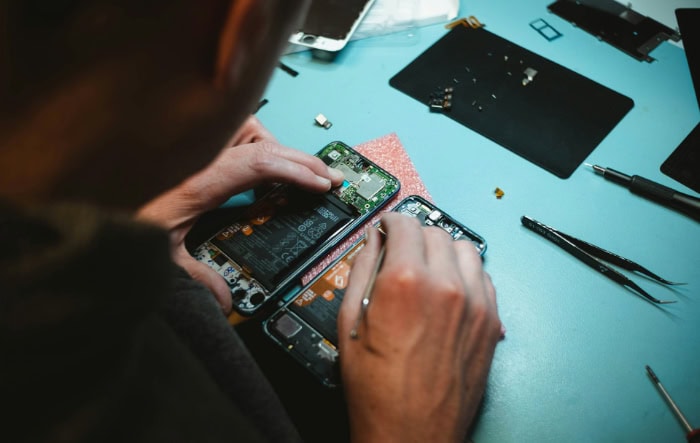
The moments following a phone drop can be crucial in determining the extent of the damage and the steps needed to minimize further harm. Acting quickly and assessing the situation carefully can help you make informed decisions about your device's condition and the necessary course of action.
Assessing Visible Damage
The first step after dropping your phone is to visually inspect it for any obvious signs of damage. Carefully pick up the phone and look for cracks, shatters, or any other visible deformities on the screen, back panel, or edges of the device.
If you have a case or screen protector, remove them gently to get a better view of the phone's condition. Take note of any cosmetic damage, such as dents or scratches, as well as any exposed internal components or loose parts.
If the damage is severe, handle the phone with extra care to avoid causing further harm or injuring yourself.
Checking for Functionality Issues
Once you have assessed the visible damage, the next step is to check your phone's functionality. Press the power button to see if the device turns on and off normally.
If the screen is responsive, navigate through the phone's menu, test the touch sensitivity, and look for any display issues, such as dead pixels, discoloration, or distorted images. Make a test call or play some media to ensure that the speakers, microphone, and other audio components are working correctly.
Check the charging port by plugging in the phone to see if it charges normally. Test the camera, flashlight, and any other features to identify potential problems.
When to Power Off the Device
If you notice any unusual behavior or signs of malfunction after dropping your phone, it is advisable to power off the device to prevent further damage. Unusual behavior may include the phone repeatedly restarting, freezing, or displaying distorted graphics.
If you smell any burning odor or notice smoke coming from the device, power it off immediately and do not attempt to use it further. In such cases, continuing to use the phone can exacerbate the damage and pose a safety risk.
Powering off the device will also prevent any potential short circuits or electrical damage that may occur due to exposed internal components.
Removing the Battery (If Possible)
For phones with removable batteries, it is recommended to remove the battery after dropping the device, especially if you suspect any damage. Removing the battery can help prevent any potential electrical shorts or fires that may result from a damaged battery or exposed internal components.
However, be cautious when removing the battery, as a damaged phone may have sharp edges or exposed parts that can cause injury. If you are unsure about removing the battery safely, it is best to seek professional assistance.
Note that many modern smartphones have sealed, non-removable batteries, in which case this step may not be applicable.
Long-Term Consequences
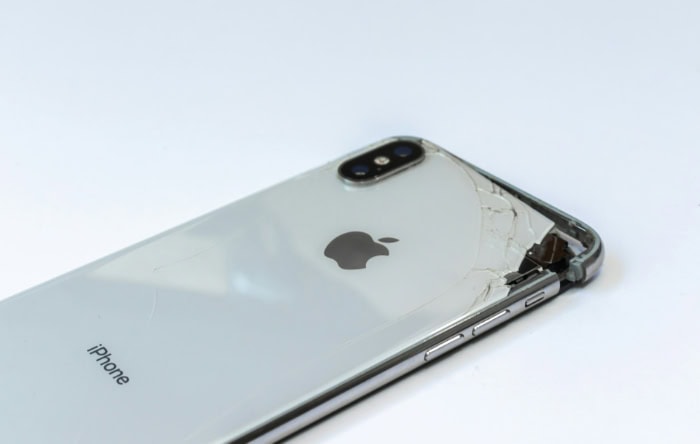
While the immediate effects of dropping your phone may be apparent, such as a cracked screen or external damage, the long-term consequences can be equally significant. Even if your phone appears to function normally after a drop, there may be underlying issues that can manifest over time, affecting the device's performance, value, and longevity.
Gradual Deterioration of Internal Components
One of the most significant long-term consequences of dropping your phone is the gradual deterioration of its internal components. While the external damage may be minimal, the impact can cause subtle shifts, loosening, or microfractures in the delicate internal parts.
Over time, these small changes can lead to a domino effect of component failure. For example, a loosened connection may cause intermittent issues with the display, speakers, or charging port.
A microfracture in the circuit board can lead to short circuits, causing the phone to overheat or experience sudden shutdowns. These issues may not be immediately apparent but can worsen over time, ultimately compromising the phone's functionality and lifespan.
Reduced Resale Value
Another long-term consequence of dropping your phone is a reduction in its resale value. Even if the phone continues to function normally after a drop, any visible damage, such as cracks, dents, or scratches, can significantly diminish its aesthetic appeal and perceived value.
When it comes time to sell or trade in your device, potential buyers will likely factor in the visible damage when determining the phone's worth. As a result, you may receive a lower price or face difficulty finding interested buyers.
The extent of the value reduction depends on the severity of the damage and the overall condition of the phone.
Increased Vulnerability to Future Damage
A phone that has already suffered damage from a drop is more susceptible to future harm. Cracks or weakened areas in the phone's structure can act as stress points, making the device more prone to further damage if dropped again.
For example, a small crack in the screen can easily spread and worsen with subsequent impacts, leading to more extensive and costly repairs. Similarly, a dented or weakened corner may not provide the same level of protection against future drops, increasing the risk of severe damage to the phone's internal components.
As a result, a previously dropped phone may require extra care and protection to minimize the chances of additional damage.
Impact on Software Performance and Stability
While the physical damage caused by dropping your phone is often the most noticeable, the impact on software performance and stability can be equally concerning. Drops can cause subtle hardware issues that may not be immediately apparent but can manifest as software glitches, crashes, or slowdowns over time.
For example, a damaged component may cause the phone to overheat, leading to throttling of the processor and reduced performance. Corrupted memory or storage due to physical damage can result in data loss, app crashes, or system instability.
These software issues can be frustrating and may require factory resets, software updates, or even professional repair to resolve, further inconveniencing the user and potentially leading to data loss.
Prevention and Protection Strategies
While it's impossible to completely eliminate the risk of dropping your phone, there are several prevention and protection strategies you can employ to minimize the chances of damage. By taking proactive measures and investing in the right accessories, you can significantly reduce the likelihood of your phone sustaining severe harm in the event of a drop.
Choosing the Right Protective Case
One of the most effective ways to protect your phone from drop damage is by using a protective case. With a wide range of options available, it's essential to choose a case that offers the right balance of protection, functionality, and style.
When selecting a case, consider factors such as the material, thickness, and shock-absorbing properties. Rugged cases made from materials like silicone, rubber, or polycarbonate offer excellent protection against impacts and drops.
Look for cases with raised edges to protect the screen and camera, as well as reinforced corners to absorb shock. Additionally, consider the case's grip and texture to minimize the chances of the phone slipping from your hand.
Installing Screen Protectors
In addition to a protective case, installing a screen protector is another crucial step in safeguarding your phone. Screen protectors act as a barrier between your phone's display and the external environment, helping to prevent scratches, cracks, and shatters.
There are two main types of screen protectors: plastic and tempered glass. Plastic screen protectors are affordable and provide basic protection against scratches, but they may not offer significant impact resistance.
Tempered glass screen protectors, on the other hand, are more durable and can absorb the shock of a drop, often shattering themselves instead of the phone's screen. When installing a screen protector, ensure a proper fit and follow the manufacturer's instructions for a bubble-free application.
Using Phone Grips and Stands
Phone grips and stands are accessories that can help prevent drops by providing a secure and comfortable hold on your device. Phone grips, such as pop sockets or ring holders, attach to the back of your phone and offer a convenient way to maintain a firm grasp while using the device with one hand.
They also double as a stand, allowing you to prop up your phone for hands-free viewing. Phone stands, on the other hand, are designed to hold your phone securely in place while you're watching videos, making video calls, or using your phone as a desk clock.
By utilizing phone grips and stands, you can reduce the risk of accidentally dropping your phone during everyday use.
Proper Handling Techniques and Awareness
Ultimately, the most effective way to prevent phone drops is through proper handling techniques and awareness. Being mindful of how you handle your phone can go a long way in reducing the chances of accidental drops.
Always use a firm grip when holding your phone, especially when walking or multitasking. Avoid using your phone in precarious situations, such as while leaning over a balcony or walking on uneven surfaces.
Be cautious when pulling your phone out of your pocket or bag, as this is a common moment for drops to occur. When setting your phone down, ensure it's on a stable and secure surface to prevent it from sliding or falling off.
Conclusion
Dropping your phone can be a distressing experience, but by understanding the potential consequences and taking proactive measures, you can minimize the risk of severe damage. From the immediate impact to the long-term effects, a phone drop can result in various types of harm, including screen cracks, internal component damage, battery issues, and compromised software performance.
The severity of the damage depends on factors such as drop height, surface hardness, phone design, and the presence of protective accessories. In the aftermath of a drop, assessing the visible damage, checking functionality, and taking appropriate actions can help prevent further harm.
However, even if your phone appears unscathed, it's crucial to be aware of the potential long-term repercussions, such as gradual component deterioration, reduced resale value, and increased vulnerability to future damage. By investing in the right protective gear, such as cases and screen protectors, and adopting mindful handling techniques, you can significantly reduce the chances of your phone falling victim to a devastating drop.
Remember, prevention is key, and by being prepared and proactive in your phone care, you can enjoy your device with peace of mind, knowing that you've taken steps to safeguard it against the perils of everyday use.


